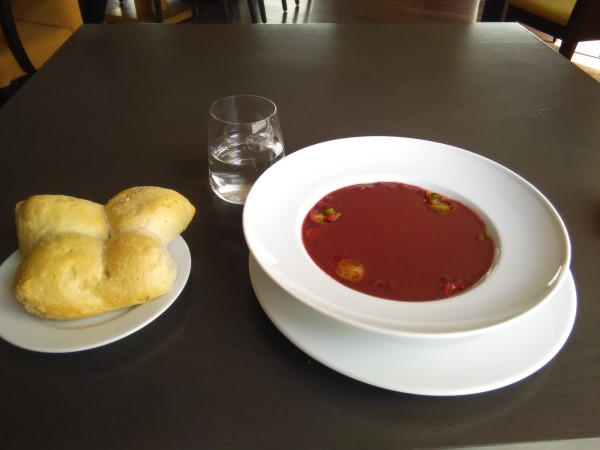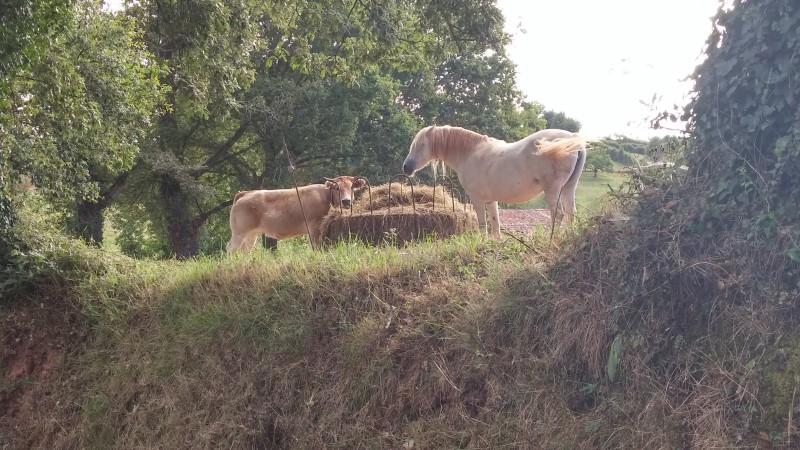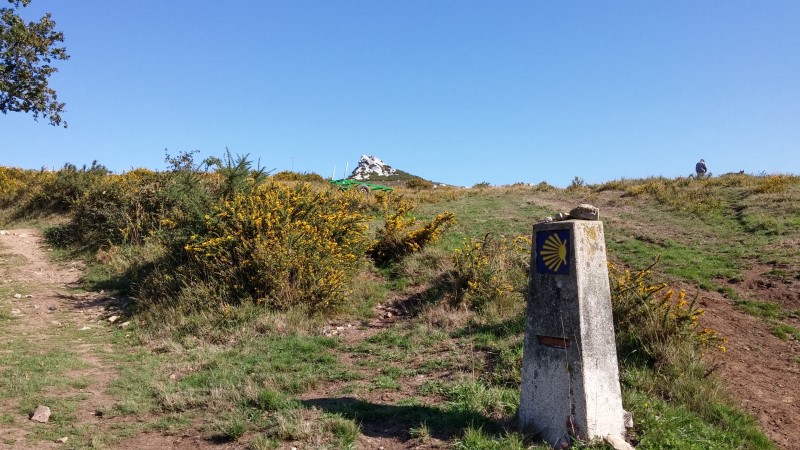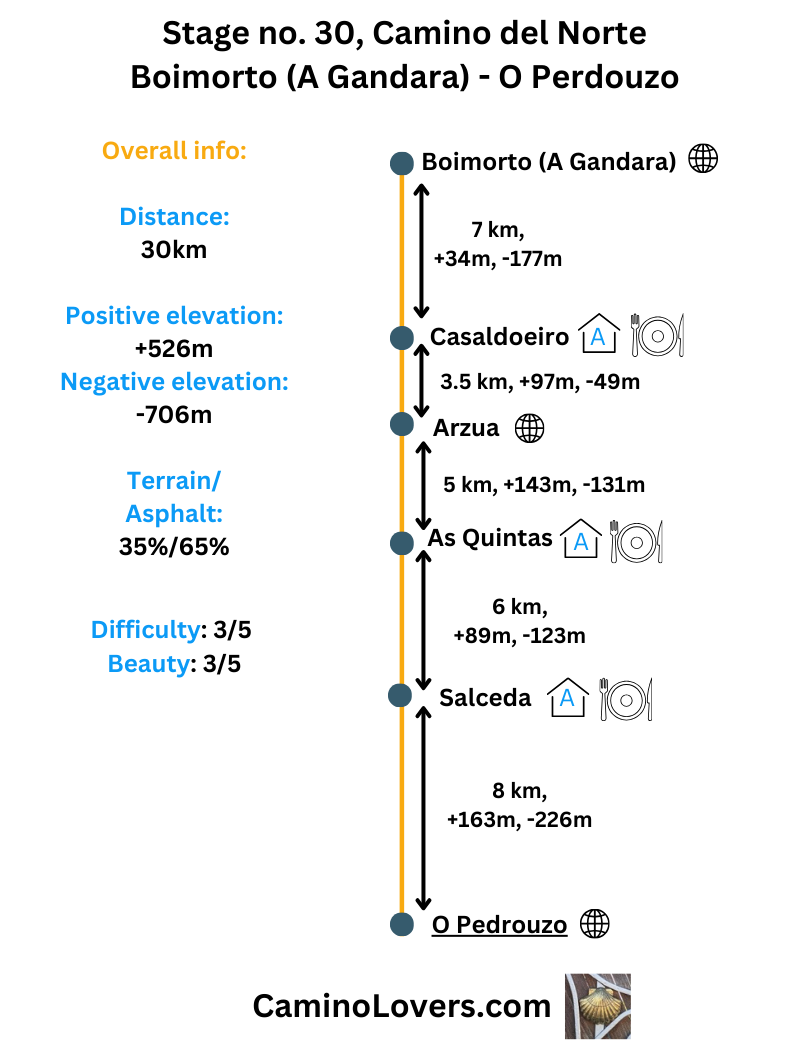
Basic Details
- Starting point: Boimorto (A Gandara), a small town with all services and two pilgrim hostels. A starting point of an alternative way that you can take towards Santiago de Compostela, avoiding the crowds on the French way for a bit longer.
- Ending point: O Pedrouzo, a small village of roughly 900 inhabitants that lives entirely from Camino de Santiago, and especially from the pilgrims who do the last 100km from Saria to Santiago (Camino Frances). You will find more than 10 pilgrim hostels in the village, and many pensions and hotels, including some luxury options. All services. It is the most typical last stop of pilgrims before reaching Santiago.
- Availability of alternative routes: YES. There is an alternative route which avoids the crowds of Camino Frances for a bit longer, by-passing the town of Arzua on the north, and connecting with the French way just before O Pedrouzo. More info on this route in “advanced info about the stage section”. * A few years ago, there has been added another alternative to this route, one that actually does not connect to the French way in O Pedrouzo, but only right before the airport of Santiago de Compostela. There are no services on this route, and it requires a long day, and there’s a lot of walking on the edge of A-54 highway, but if you want to avoid the crowds from the French Camino for as long as possible, and do not mind doing 40+ km day on your last day, you can take it. I have mapped it for you here, and you can download the GPS here (it is almost 45 kilometers in one go, from Boimorto all the way to the Cathedral in Santiago de Compostela).
- Distance: Official camino route: 30 km (download GPS here). Alternative northern route: 25 km (download GPS here).
- Elevation difference: Official Camino route:+526 m, – 706 m. Alternative route: +328 m, – 518 m.
- Link to online map: Official Camino route: here. Alternative northern route: here.
- Difficulty score: Official camino route: 3/5. Alternative route: 2/5.
- Beauty score: Official camino route 3/5. Alternative route: 2/5,
- Terrain/asphalt: Official camino route: 35%/65%. Alternative route: 20%/80%.
- Next stage: Camino del Norte, stage no. 31, O Pedruozo – Santiago de Compostela.
- Previous stage: Camino del Norte, stage no. 29, A Cabana – Boimorto (A Gandara).
Elevation profiles for the routes
 – Official Camino route over Arzua, definitely more eventful and hilly than the alternative route. However, it is also more beautiful, has more services, and you spend more time walking on the trails (instead of on paved roads).
– Official Camino route over Arzua, definitely more eventful and hilly than the alternative route. However, it is also more beautiful, has more services, and you spend more time walking on the trails (instead of on paved roads).
 – Alternative route, very easy descent, avoiding some hills of the official camino. Bear in mind though that it isn’t a particularly nice way and if you take it, you will spend 80% of time walking on paved roads again. Both routes meet roughly 6 km before O Pedrouzo, the ending point of today’s stage.
– Alternative route, very easy descent, avoiding some hills of the official camino. Bear in mind though that it isn’t a particularly nice way and if you take it, you will spend 80% of time walking on paved roads again. Both routes meet roughly 6 km before O Pedrouzo, the ending point of today’s stage.
Advanced info about the stage
- Trail marking: On the official Camino route, the trail marking is spotless, and there’s no chance of getting lost. What’s more, once you already connect with the French way, handkerchiefs, and other rubbish on the side of the route will always tell you which way to take on the crossroad :). On the main alternative route (the one that connects with the French Camino roughly 6 km before O Perdouzo), you won’t see the stone markers and the yellow arrows are not as frequent. However, it is still well marked and you have nowhere to get lost. The extra alternative route (that avoids French way altogether) is not well sign-posted. However, for the extra part you always stick to the right side of the highway A-54, from Santiago to Lugo, and hence do not really have anywhere to get lost. To be 100% sure, however, you can download our GPS for this “highway” alternative: GPS for the route.
- Alternative route info: The main objective of designing this route was to bring a bit more life to some small hamlets in this part of Galicia, and to allow the pilgrims on the northern route to avoid the crowds on the French way for a bit longer. It is less hilly and less green and less nice than the official camino, and you will encounter very few services along the way. However, it is also shorter, and in some circumstances it makes sense taking it. It really depends on your preferences.
- Natural places worth seeing: Nothing in particular, on either the official Camino, or the alternative way. However, the official Camino passes through some nice stretches of rural Galicia, especially in the first 8-10 kilometers after Arzua, which is the nicest part of today’s walk. As you can likely imagine though, the tens of thousands of pilgrims traversing these paths every year have left their mark in the zone, and you cannot really expect some narrow trails or single-tracks or anything of that sort :). The routes you follow are mostly wider gravel roads or paved roads. But the surroundings are sometimes really nice.
- Historical, architectural, artistic, and culinary places worth seeing:
- The wall of wisdom: An interesting set of philosophical messages, in English and Spanish language, run by a philosopher and writer Bruno Lernout, who lives in the town of Arzua. An ideal place to stop, read the messages, and reflect on your Camino and what it has taught you. The messages are changed every two years. There is a good bar and an excellent albergue right next to the wall of wisdom as well.
- Ermita de Santa Irene: A beautiful chapel dating back to 17th century, right on the Camino. Located in a nice natural location, it makes for a good spot for a short break too, especially if you want to avoid the crowds in the bar and other typical stopping places for pilgrims.
- Camping/bivouac options on this stage: Extremely tricky considering how touristic the zone is. On the other hand, police is quite tolerant to people who sometimes bivouac on the streets of towns on the last 100 kilometers on the Camino, since they know that during the main season, the capacities are simply not sufficient, and some pilgrims won’t get a bed. What many people do in such scenario is sleeping in hotels farther from the Camino, and taking taxis to and from the place, but some cannot or do not want to do it this way, and they will bivouac randomly in the towns. You can give it a shot as well. And if the police comes to talk to you, simply say that you haven’t found any place in the pilgrim hostels :)… There is also one organized camping in the zone:
- Teiraboa basecamp: 600 meters way from Camino del Norte, you have to walk back along the French way to arrive to the camping. Dog friendly (you pay 4 euro extra for the dog), decent prices, frequented by pilgrims including big groups of Spanish students. The location isn’t great, but for this zone and everything, it is good enough. However, you should not count 100% on encountering a place here during the high season of the pilgrimage–better call them in advance. You can pitch your own tent or use one of the tents/cabins the camping has in place.
- Dog friendly score: 3/5. An average stage for dogs, but it really depends on how your dog reacts to the crowds. The good news is that there are so many albergues in the zone that you will always find at least a few that accept dogs, and hence do not need to camp. There is also enough shade and several river crossings where the dog can drink water and coll itself down on a hot day.
- Special remarks: None.
Accommodation options on today’s stage
* The infographic displays the number of pilgrim hostels (only pilgrims allowed), hostels (anyone allowed, shared rooms), and other accommodation options (hotels, pensions, etc, private rooms) in each point along the route, together with price range. For exact explanation of the pictograms we use check the explanations page. Below the infographic you will see our recommended picks (up to 3 pilgrim options and 1-2 “privacy” options, maximum five) for the stage, together with important information (but not too much info, just what you need :-)).

Recommended places to sleep along this stage
Pilgrim options:
* Before proceeding to my picks, I want to stress that here you already share the way with Camino Frances, and there are simply MANY pilgrim albergues. For example in Arzua alone you have over 10 pilgrim albergues. Basically many options for each budget. Consult websites like booking.com for a wider selection…
- Albergue Ultreia, Arzua (km 10). Location and reviews on Google maps here. 28 beds, 12 euro/bed. Probably the best rated pilgrim place in the town of Arzua. Clean, well-equipped & organized, with great attention from the hosts. It is a city place and obviously cannot have the vibe and atmosphere of some fantastic albergues you stayed at in former parts of your Camino, but for this last stretch it is a pretty good one. Restaurant onsite, menu highly praised by pilgrims. Check-in from noon, recommended way of reserving a bed: booking.com, or phone call, +34 981 500 471, or +34 626 639 450.
- Albergue Taberna-Vella, As Quintas (km 15). Location and reviews on Google maps here. A beautiful albergue in a natural location, a chance to escape the crowds and “the last 100km buzz” for an afternoon and one night at least. A great host, homemade dinner, and great reviews on all pilgrim platforms. Highly recommended. Check-in from 2pm, recommended way of making a reservation: phone call, +34 687 543 810.
- Albergue Edreira, O Pedrouzo (km 30). Location and reviews on Google maps here. 13-14 euro/night, 32 beds. Probably the best albergue in O Pedrouzo, though in the places close to Santiago it is hard to tell, because some new places open and some places close each year, and of course one cannot visit or know all of them. Anyway, very clean, with nice hosts, pretty good reviews on various pilgrim platforms, and a quiet location. Check-in from noon, recommended way of making a reservation: phone call, +34 660 234 995, +34 981 511 365.
Privacy/luxury options:
- Pension Casa Elena, Arzua (km 10). Location and reviews on Google maps here. Amazing reviews on all platforms, 90% of guests are pilgrims, double room from 65 euro/night (prices can change during the season). Great location (close to the main street of Arzua, yet in a quiet corner), spotlessly clean, and overall it would be hard to find any mistakes with this place… Check-in from 1pm to 7pm, recommended way of making a reservation: booking.com.
- Pension Lobre, O Pedrouzo (km 30). Location and reviews on Google maps here. The best private accommodation option in O Pedrouzo, considering price/quality ratio. Rooms from 80 euro/night. The entire place is nicely renovated, decorated, clean, and with great attention from the staff members. Almost all guests are pilgrims. Check-in from 12:30pm, recommended way of making a reservation: booking.com.
Pictures from the stage


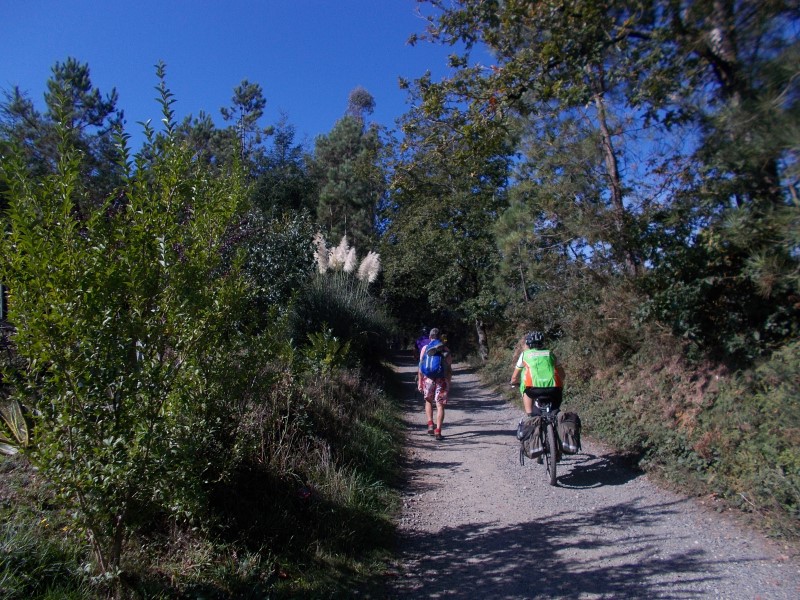

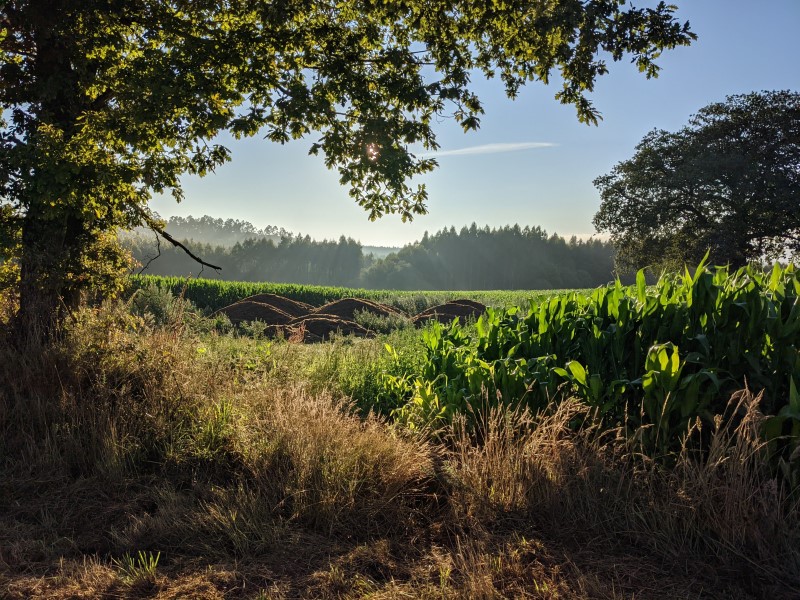

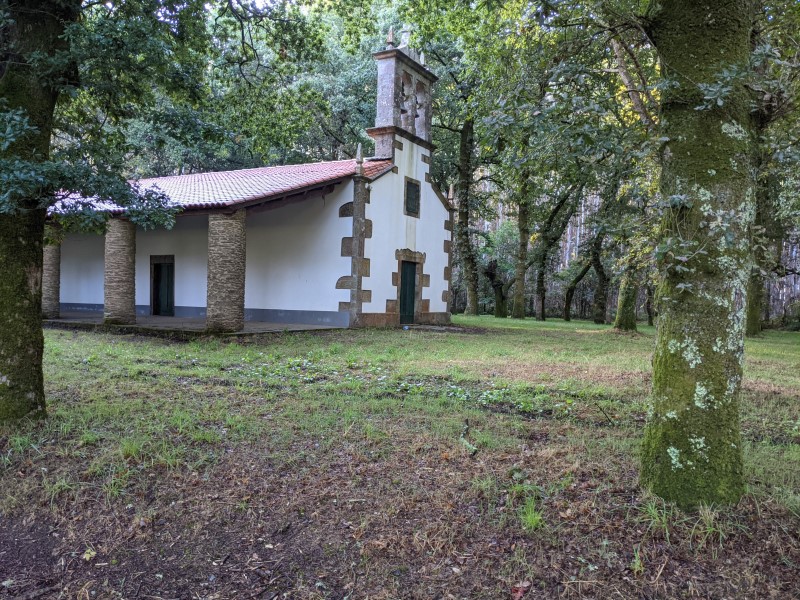

Few tips at the end
- Many pilgrims walking all the way from Irun (or Bilbao or Santander, simply people doing a long pilgrimage), get super upset on the last kilometers to Santiago. Because they hate the crowds and the noise, and miss the beauty and the company of “real” pilgrims, instead of organized tourist groups with miniature backpacks and guides. However, this is also a part of the pilgrimage culture. If you cannot tolerate it, I suggest you to take the alternative route along the highway (see the alternative route section above), or start walking really late to avoid the crowds. At the end of the day, respect and tolerance are lacking in this world. Maybe the crowds of tourists are here to teach you this important lesson… If you cannot love them, avoid them. And if you cannot avoid them, try to love them, or at least respect them.


![Ultralight Packing List for Camino de Santiago [2024 Edition]](https://caminolovers.com/wp-content/uploads/2022/03/altra-shoes-640-x-480.jpg)
